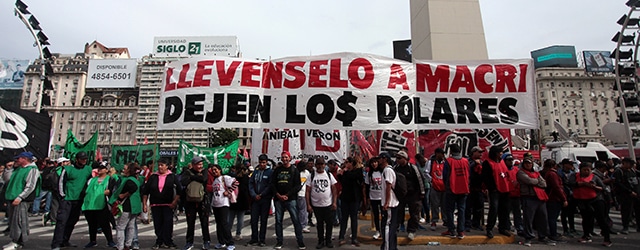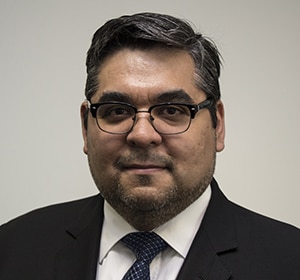Latin American governments struggle to keep investor-friendly reforms on track in the face of slumping economies and a populist revival.

The headlines are undoubtedly scary: Venezuela’s economy collapsing; Argentina threatened with a return to hyperinflation; Brazil’s new government lurching uncertainly into a new phase, combining populism with market-friendly measures. Looked at more broadly, however, Latin American governments are moving to address an adverse external environment for business and keep their ambitious investment and reform agendas on track—particularly in the Andean region, parts of Central America and in the southern cone.
Some recent facts are notable. After about 20 years of negotiations, the members of Mercosur—Brazil, Argentina, Paraguay and Uruguay—agreed with both the European Union and the European Free Trade Association (Switzerland, Norway, Iceland and Liechtenstein) on landmark free-trade liberalization deals. Colombia, Chile, Peru and Bolivia are attracting investment in a widening range of industries in addition to mining and financial services. Panama is consolidating its position as “one of the most dynamic economies in the world,” according to a recent report by the International Monetary Fund (IMF). And El Salvador is refocusing on chronic poverty and emigration.
Undeniably, 2019 has been a grim year for Latin America. The IMF estimates that the region will see only 0.6% GDP growth this year, well below the world average of 3.2% and even worse than the 1% registered in the region in 2018. If Venezuela is excluded, the estimate is a bit better at 1.3%. This reflects dashed hopes for more-robust growth in Brazil, Mexico and Argentina, the largest economies in the region, and the toll taken by the Chinese and American economic slowdowns, trade wars and lower commodity prices.
The IMF projects better GDP growth in 2020, at 2.3%, although that would still be well below its 3.5% average projection for the world. In 2018, Latin America was able to reverse the downward trend in foreign direct investment, and this positive curve should continue this year, according to the Economic Commission for Latin America and the Caribbean (Eclac). Sectors such as agribusiness, mining, infrastructure, energy, telecommunications and fintech continue to attract capital, despite challenges in the global economy.
Populists, Left and Right
Now that Brazil’s National Congress has tackled pension reform, the government of Jair Bolsonaro is turning its attention to tax cuts to stimulate the domestic market and attract more private investment. A plan to privatize the main electric utility, Eletrobras, and 16 other state-owned companies is expected to be implemented by the end of 2023 and could fatten public coffers by $250 billion or more. Auctioning of new oil fields and 5G service contracts during late 2019 and early 2020 is also expected to help the public accounts and the local telecommunications equipment sector.
María Cecilia Plottier, economic affairs officer at Eclac’s Investment and Business Strategies Unit, says the auctions will bring more dynamism to the Brazilian economy but she warns that predicting when and how capital will come to Brazil is difficult. GDP growth is expected to expand just 0.8% this year, according to the IMF. And the 2.4% it projects for 2020 might be overly optimistic.
The Mercosur trading bloc used to be considered one of the most protectionist economic regions in the world. But the four South American countries are now engaged in free-trade negotiations with South Korea, Singapore and Canada. Japan is a future target. If these talks bear fruit, they could bring further significant changes, including greater competitiveness and better ways to control inflation.
 Oviedo, Barclays: It will take Mexico fouror five years to repair the effects of curtailingforeign investment in the energy sector. |
The Brazilian government’s reform agenda and the EU-Mercosur agreement will “generate a change in expectations that will affect how economic agents see the future of Brazil,” said Alejandro Werner, director of the IMF’s Western Hemisphere department, at a July press conference. “Therefore, they will lead to some kind of review in terms of future growth, equilibrium of the real exchange rate, etc.”
For Argentina, much will depend on which president voters elect this month. The nation is again on the edge of a default, and none of the monetary and fiscal measures under President Mauricio Macri have tamed inflation—running above 50% this year—or reversed negative growth and the high unemployment rate. Argentina is on course to register its second year in recession, with a -1.3% growth rate in 2019. But it could recover next year, some observers say, and expand its GDP by 1.1% in 2020.
Market turbulence in August owed something to business and investors getting used to the prospect that Alberto Fernández, a Peronist, will win the election. Fernández says he will respect contracts and investors if elected; but to fulfill the expectations of his followers, he will have to change the country’s macroeconomic orientation. Argentina is thirsty for investment and remains one of the world’s agribusiness giants. Opening more blocks of its Vaca Muerta oil and shale gas reserves could help attract new money.
Reform in Search of Growth
The Andean economies have been among Latin America’s fastest growing, and this is expected to remain the case in 2020. Colombia, Chile and Peru are expected to reach GDP growth rates of 3.2% to 4% next year, in part because they are keeping to the reform track.
Foreign direct investment in Chile in 2019 is half the average of the past two years, says Plottier. But the country is still an investment target for telecommunications, mining, renewable energy, engineering, infrastructure, medical services, banks and tourism. Werner expects growth to accelerate in the second half, “on the back of monetary policy actions [and] infrastructure expenditure by the government.” That should propel the economy to 3.2% projected growth in 2019, he told the press conference in July.
The news from Central America is less hopeful, as the caravans of poor and desperate immigrants from these countries to the US continue to reveal governments’ inability to deal with their historical social deficits and instability. But the region has grown faster than South America in recent years, and the IMF expects this performance to continue in 2019 and 2020. Panama, in particular, is projected to grow 6% this year and 5.5% in 2020.
Since the 1980s, Panama has been implementing policies to improve the business environment, privatizing state-owned companies and opening its markets. It has also adopted modern bank regulation, improved fiscal discipline and strengthened its regime of dollarization. The enlargement of the Panama Canal, along with a range of infrastructure projects to facilitate the passage of ships, is attracting more investors. The fruits are in per capita GDP, which has grown to over $15,500 in 2018 from around $2,300 in 1990, according to the IMF. “Panama has been keeping a successful policy to support the development of the canal and the infrastructure,” says Plottier.
El Salvador, the source of a wave of immigrants this past year, has better prospects since the inauguration of a new government on June 1. Conservative President Nayib Bukele was elected thanks to a growth agenda that highlighted poverty reduction and fighting the criminal gangs, or maras, says José Eduardo Luna, executive director of Banco Cuscatlan. Bukele took immediate steps to focus more attention on the financial and manufacturing sectors, support a recovery in construction, and promote new initiatives in tourism and the development of El Salvador as a production center for other Central American countries.
“We agree 100% with his agenda, which will be hard to implement,” says Luna. “Bukele also promised to fight the endemic corruption, which is our worst inheritance.”
Bukele’s proposed reforms will require changes in the country’s banking system. Only 25% of El Salvador’s 6.5 million people have a bank account, Luna says; most of the money in the system comes from remittances, which represent over 20% of GDP. Credit offers to small and medium-size businesses are something recent. Banco Cuscatlan has invested $25 million in new technologies to improve its credit lines, trade operations and international transactions—and transform itself into a digital bank.
Amlo’s Rocky Honeymoon
When Latin America’s second-biggest economy closed its doors to private investment in its huge energy sector, it automatically reduced growth expectations. Mexico will grow only 0.9% this year and 1.9% in 2020, the IMF predicts. Nationalist and left-populist President Andrés Manuel López Obrador (AMLO) pledged that his new government would respect contracts already signed. But his mixed messages to the energy sector, which generates 28% of federal income, haven’t helped an economy paralyzed by the reduction of public investments.
“It is taking a long time to accelerate the activity. When an element gets better, another turns worse,” observes Marco Oviedo, chief economist for Latin America at Barclays. “It will take four or five years to repair the effects of this energy-reform setback.”
The most important issue facing Mexico now, he adds, is ratification of the United States-Mexico-Canada Agreement (USMCA), the successor to the North American Free Trade Agreement (NAFTA), this fall. In this respect, AMLO is playing his cards carefully. Immigration from Central America has become an enormous public issue in the US under the Trump administration; and at least until the USMCA is ratified, López Obrador is refusing to fight Washington on this matter. “He is orthodox, and he knows that fighting Washington can cause trouble for the Mexican exchange rate,” Oviedo comments.



